9. Textile as scaffold¶
Inspirations¶
FabBRICK¶
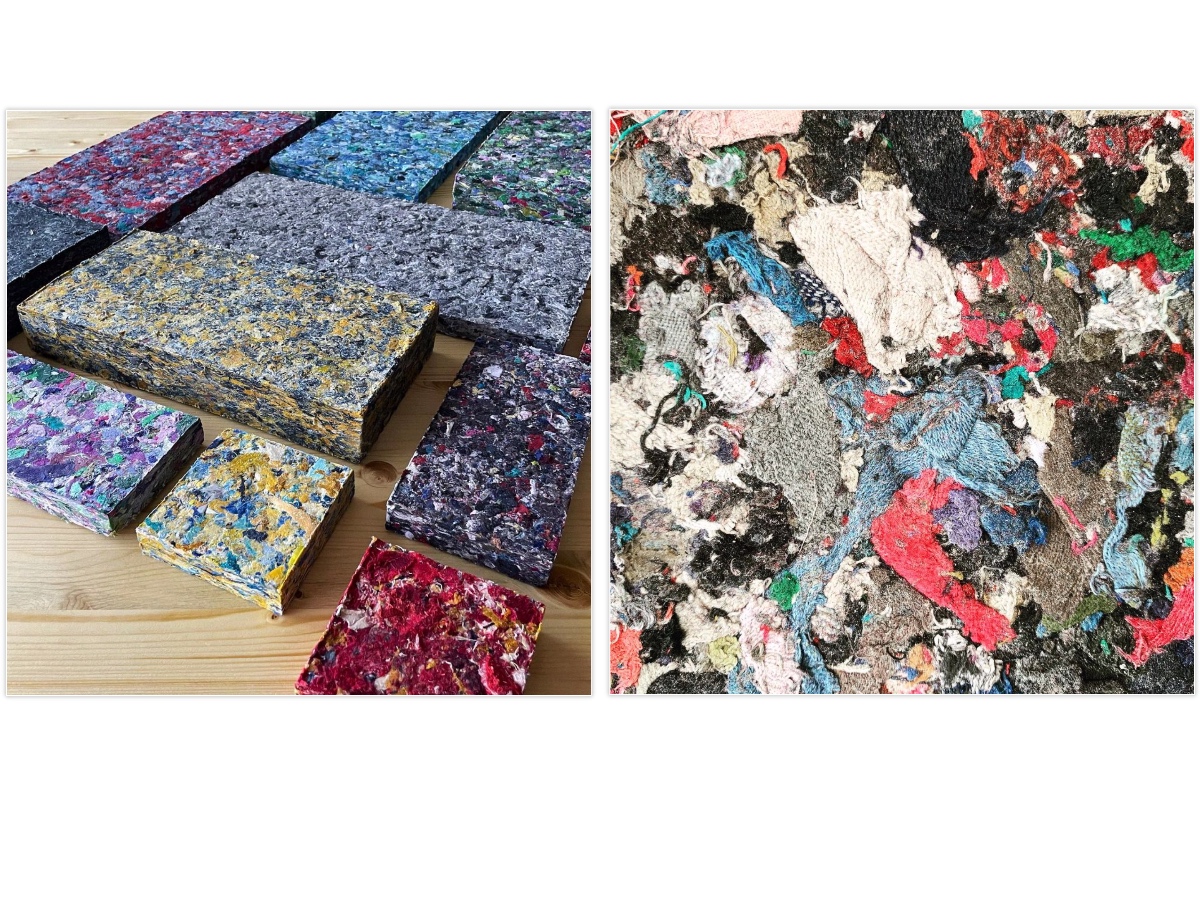 A small design company that makes bricks for diverse use out of waste textile.
A small design company that makes bricks for diverse use out of waste textile.
We transform daily your textile waste into bricks of different shapes & different colors. With our materials we design your spaces and create your furniture, with your own textile.
You can see their work here
Kofta¶
Ukrainian bags designer that works with Leather Molding.
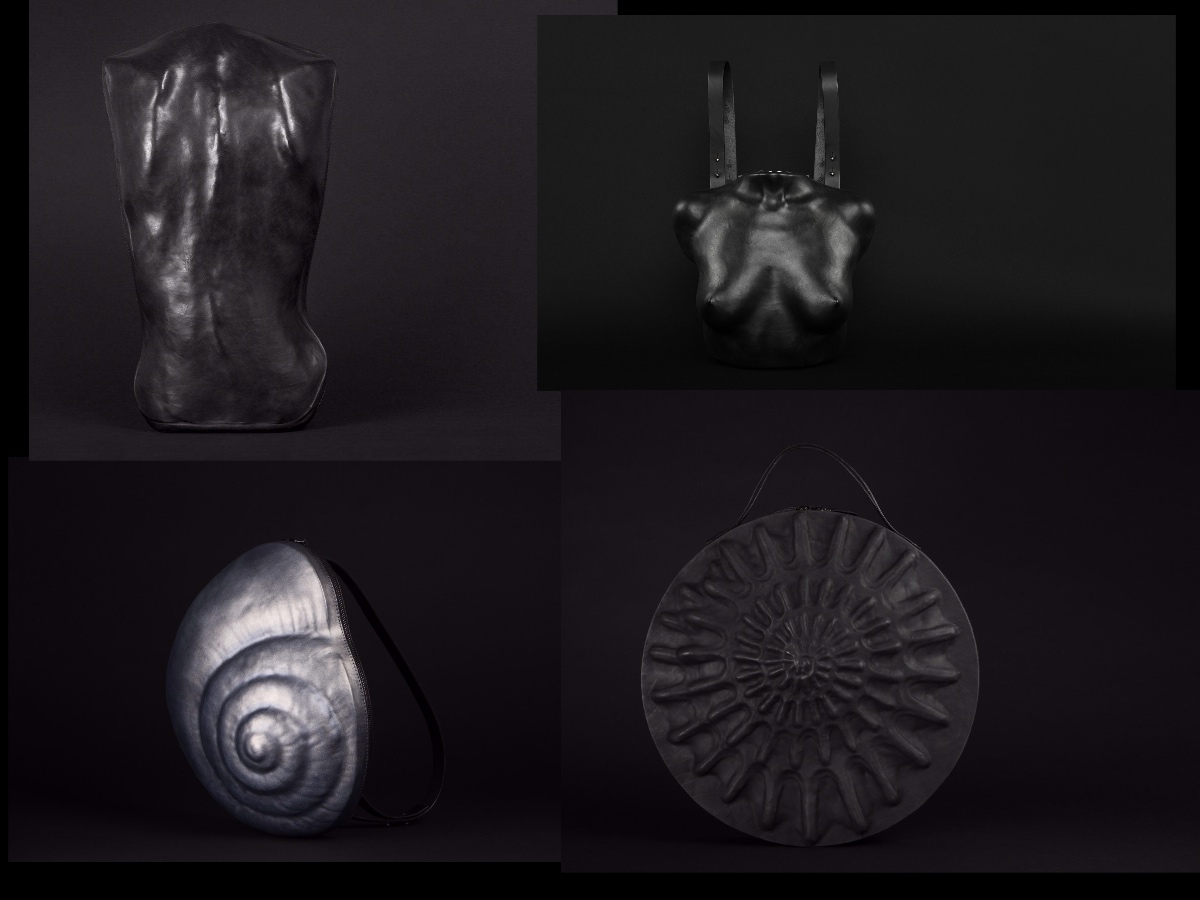
Soviet Shapka-Ushanka¶
Here Im going to tell a short story about the famous Shapka-Ushanka, that outside of Russia is known just by the name Shakpa which means "Hat" in Russian, but its actually not a complete name. When I was little I lived in the time of Soviet Union, so I have many childhood memories about this period. The end of Soviet times were not easy, so eerybody had to make their own clothing and accessories to be able to look good and fashionable, so my Grandma used to make hats by herself using wooden hat forms and various fur of Siberian animals and these forms would be travelling across the village and being exchanged and usually the men would be carving them my hand with a design direction of their wifes. And I rememember my grandma molding these furs on the wood and fabricating many hats for her children and close friends to survive cold Siberian winters that get to - 40 sometimes and only animal fur at that time could save you from being frozen outside.
Besides Shapka-Ushanka there were many other endless designs that Im going to share with you here below:
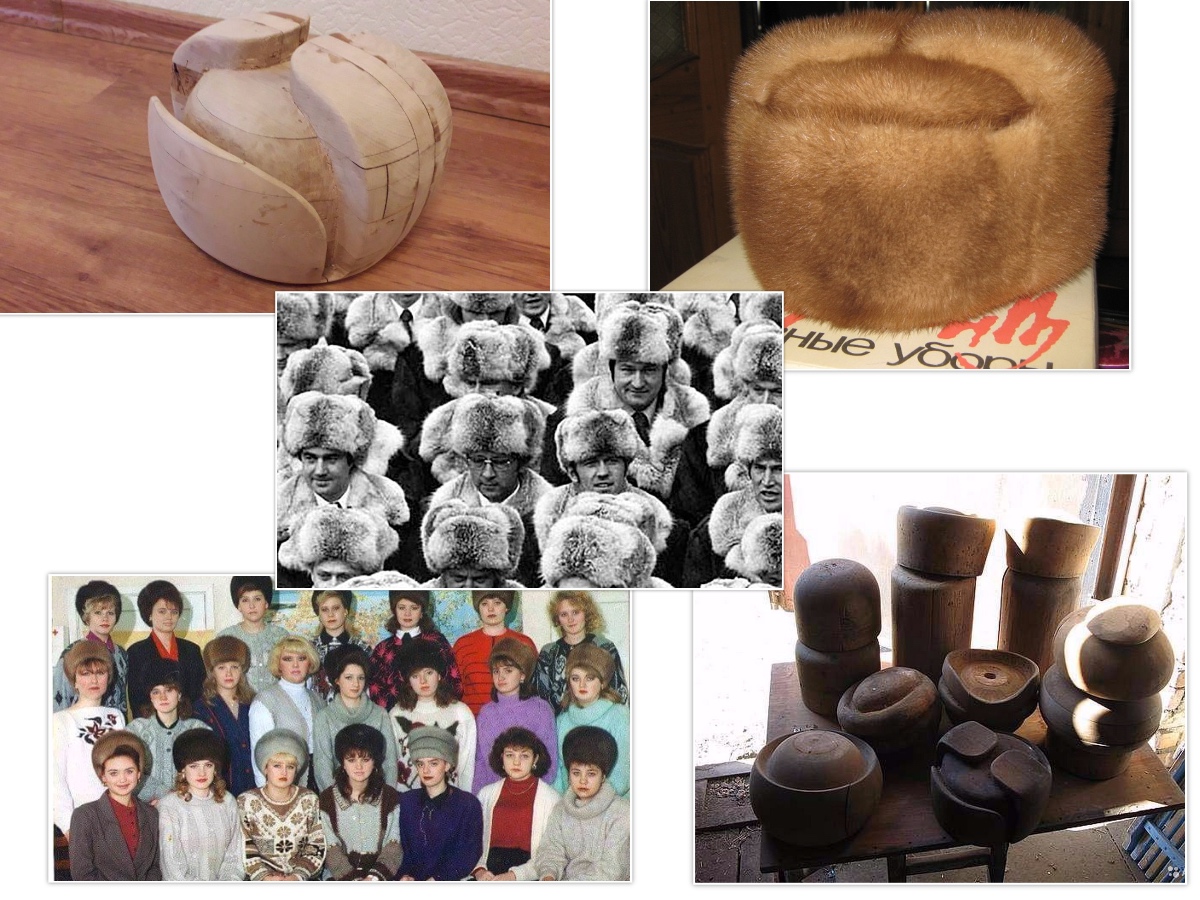
Soil and Clay¶
This week I really wanted to work with soil and clay, to have the feeling of it, to touch it and smell it, but didnt have the opportunity, but surely will do later on. Im going to share some things I would like to do with soil:
Adobe¶
 The citadel of Bam, Iran, or Arg-é Bam, in Kerman Province, Iran: The world's largest adobe structure, dating to at least 500 BC (Wiki)
The citadel of Bam, Iran, or Arg-é Bam, in Kerman Province, Iran: The world's largest adobe structure, dating to at least 500 BC (Wiki)
Adobe is a building material made from earth and organic materials, adobe is Spanish for mudbrick. In .> some English-speaking regions of Spanish heritage, such as the Southwestern United States, the term is > used to refer to any kind of earthen construction, or various architectural styles like Pueblo Revival > or Territorial Revival. Most adobe buildings are similar in appearance to cob and rammed earth > > > buildings. Adobe is among the earliest building materials, and is used throughout the world. Adobe architecture has been dated to before 5,100 B.C (Wiki)
Here is the a short article About Adobe
Adobe bricks tutorial
Bogolanfini¶
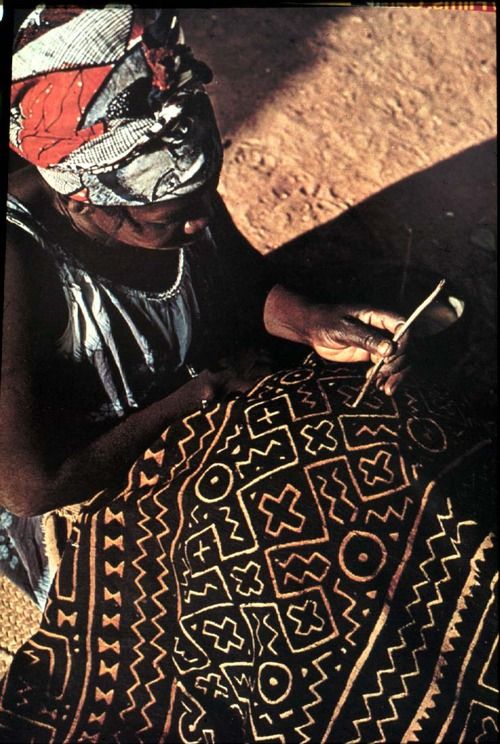
Bògòlanfini or bogolan (Bambara: bɔgɔlanfini; "mud cloth") is a handmade Malian cotton fabric > traditionally dyed with fermented mud. It has an important place in traditional Malian culture and has, more recently, become a symbol of Malian cultural identity. The cloth is exported worldwide for use in fashion, fine art and decoration. (Wiki)
Even though Bogolanfini I would find more relevant for the week of 4 Biochromes Im going to put it here as I rememebred about this technique while looking at Adobe. So I would say its work Earth, Clay and Soil to make beautiful things.
Some tutos on how to make Bogolanfini:
Crystallisation¶
 Snowflakes - one of the most known and common example of crysallisation.
Snowflakes - one of the most known and common example of crysallisation.
Crystallization or crystallisation is the process by which a solid forms, where the atoms or molecules > are highly organized into a structure known as a crystal. Some of the ways by which crystals form are precipitating from a solution, freezing, or more rarely deposition directly from a gas. Attributes of the resulting crystal depend largely on factors such as temperature, air pressure, and in the case of liquid crystals, time of fluid evaporation.
Practice
Crystallisation was one of the things I was very curious about, how to make it, actually it grows all by itself, you make a mixture and you wait. So here is the step-by-step tuto on Alum crystallisation:
Ingridients:
- 1 L of Water (better demineralised, your crystals will be more transparent)
- 250 gr of Alum
- Diverse materials: Fibers, fabrics etc.
Warm the water and add 250 gr of Alum into it and when it dissolves you add your materials into it attached to a stick on the top, see the photo below, this will allow the crystalls to grow evenly on the surface. And leave it for 12 hours without moving it!
 Set-up of growing crystalls
Set-up of growing crystalls
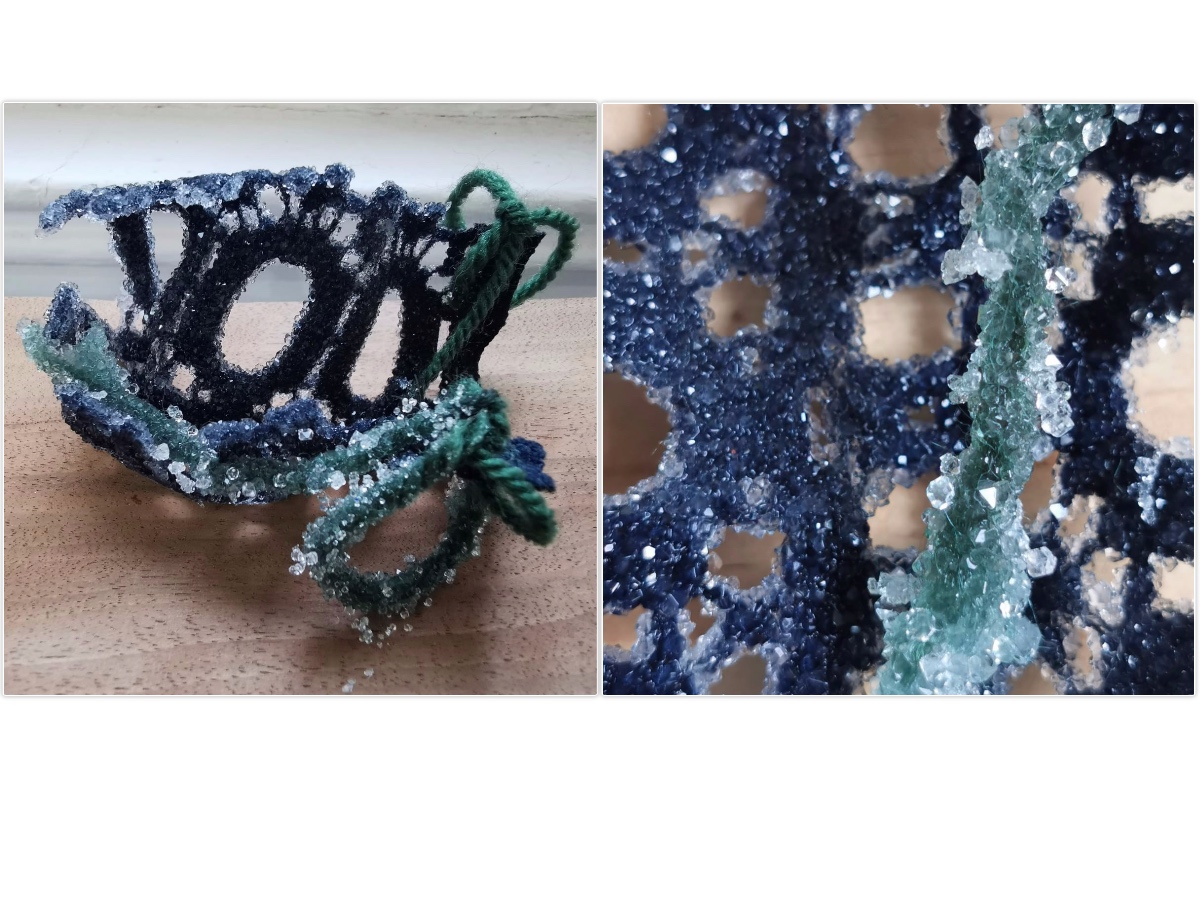 Syntetic lace with wool thread. It worked very well and even.
Syntetic lace with wool thread. It worked very well and even.
 Left-over threads from numerical embroidery machine + piece of leather. As it was left for a weekend, it turned out to be overgrown crystalls piece.
Left-over threads from numerical embroidery machine + piece of leather. As it was left for a weekend, it turned out to be overgrown crystalls piece.
 crystallisation on cypress. It was left for a weekend as well, so the result is not good, also the Alum mixture has changed the color of cypress. The idea was to make an even crystallisation and test how it could work as a Christmas decoration for a pine
crystallisation on cypress. It was left for a weekend as well, so the result is not good, also the Alum mixture has changed the color of cypress. The idea was to make an even crystallisation and test how it could work as a Christmas decoration for a pine
Leather molding¶
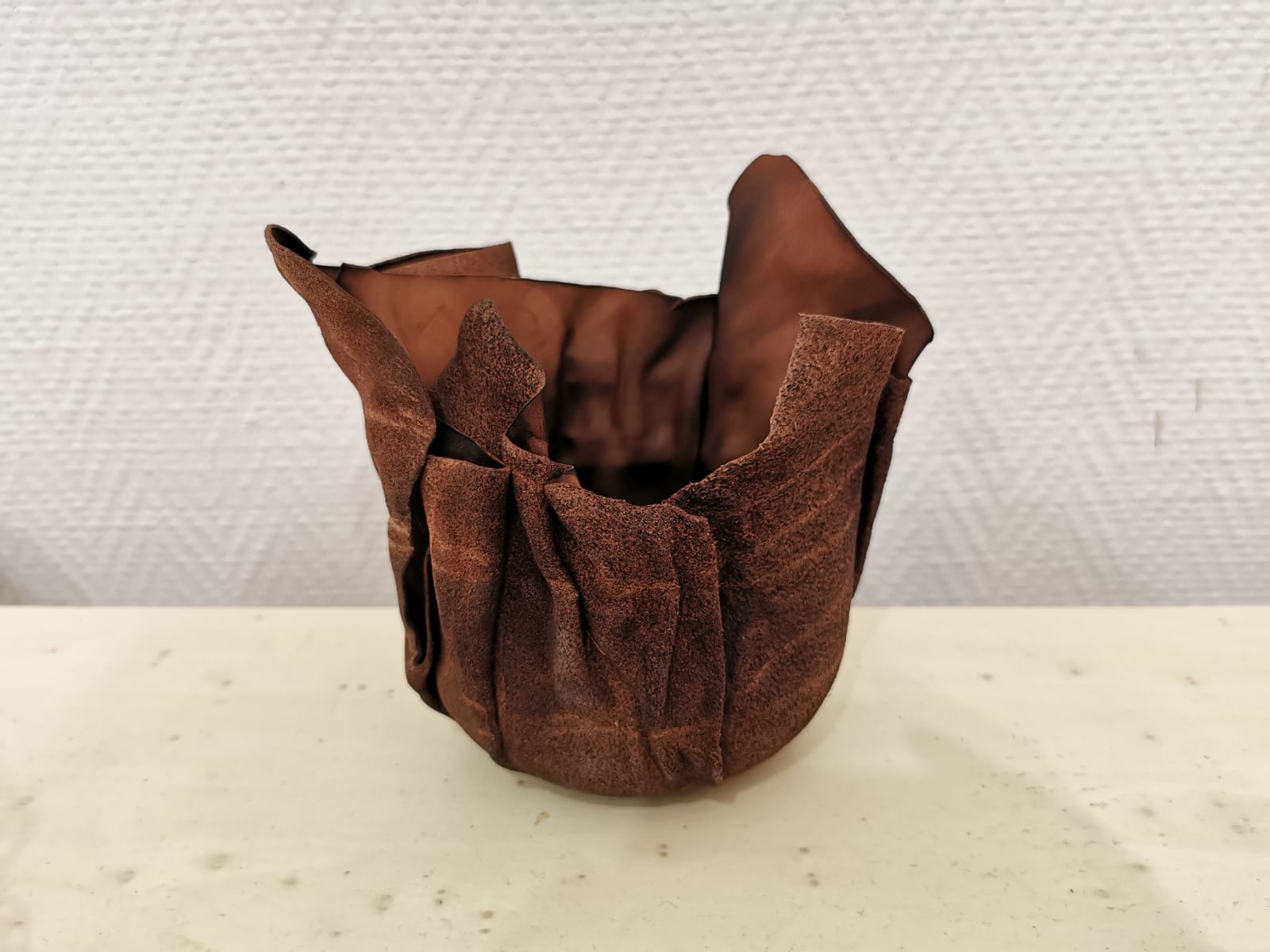
As we work in a common lab all together with other Fabricademers we share information what we work on and we try to make diverse things to explore more. So as nobody was working with leather - I thought Im going to try it. We had a stock of left-over leather pieces which I could use. With a step-by-step tutorial of Anastasia I made leather molding.
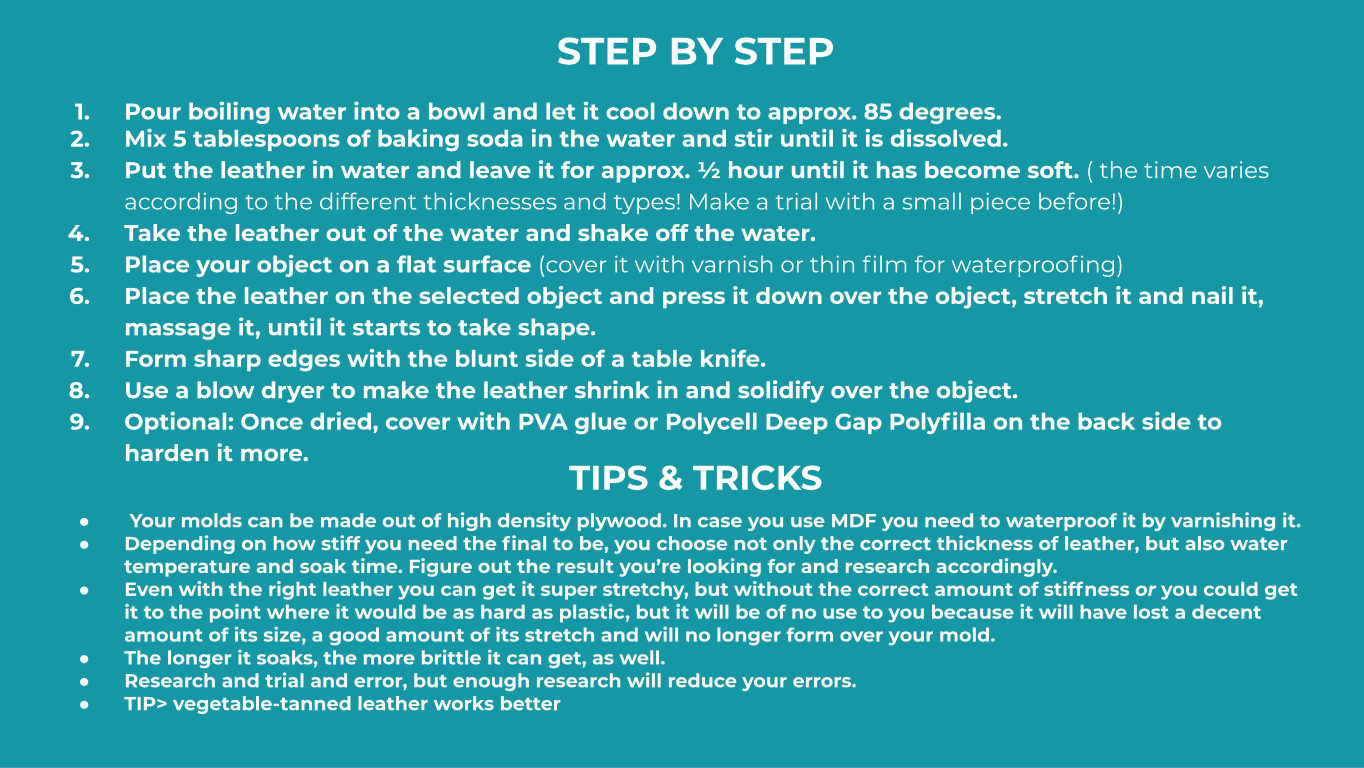
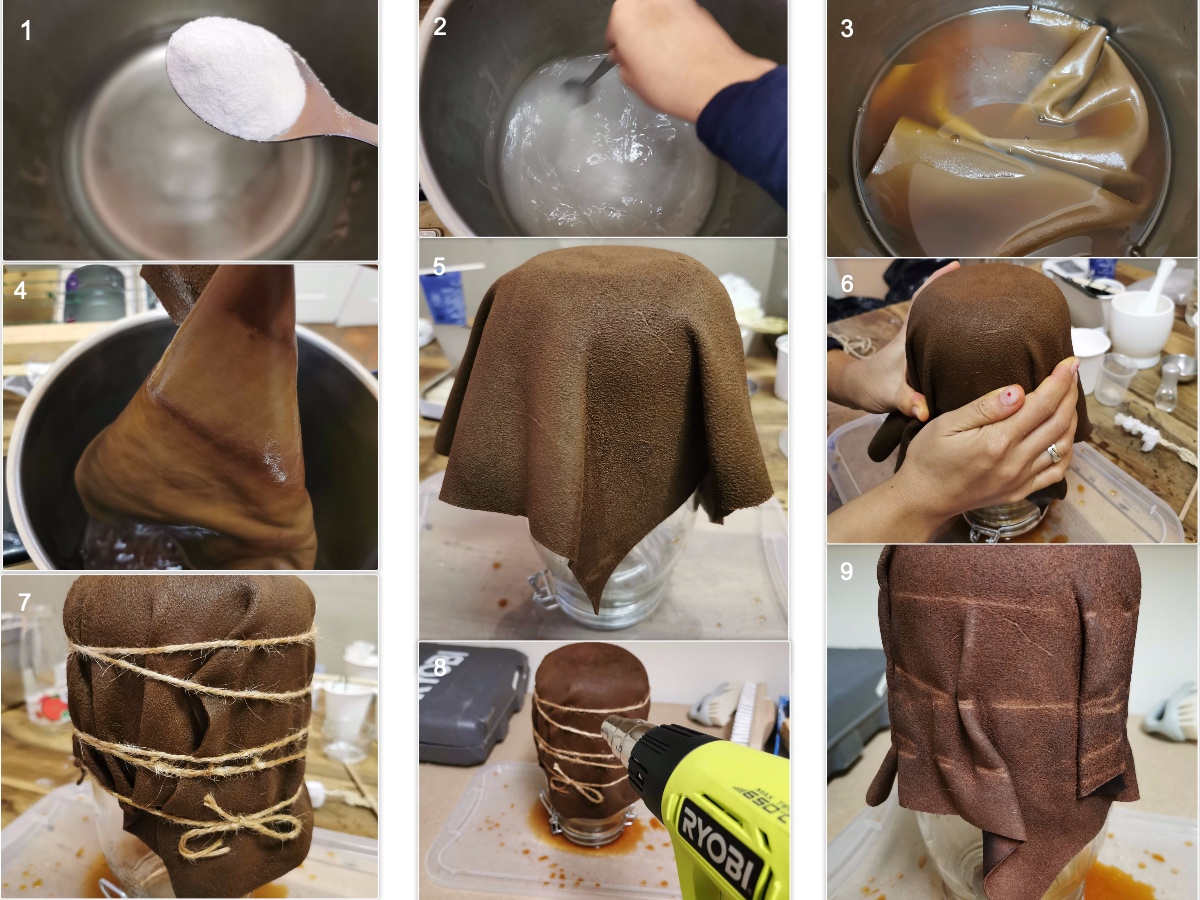
Creation of a new material from waste and left-overs¶
I am convinced that every designer has to take care of their own waste. So as a part of my collections of Traditional Futures I make new textiles using all leftovers of the threads and fabrics, this project I call Kartografia, it is a map-history of what I have created during my last collection.
